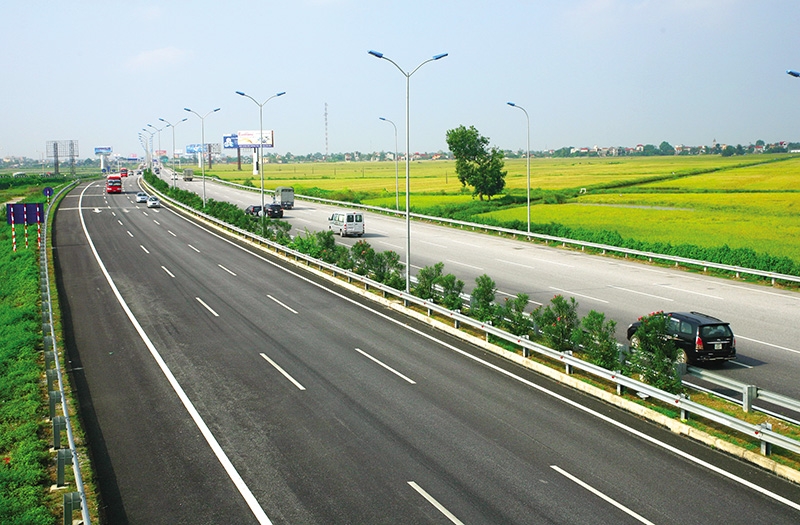Crystallising investment rules for infrastructure developers
 |
| As more international companies place their trust in Vietnam, the country must do more to ensure laws and regulations are watertight and clear (Photo: Le Toan) |
Many governments around the world, including in Vietnam, are facing difficulties in infrastructure development in service of socio-economic development because of limited financial resources.
Thus, public-private partnerships (PPP) in general and projects under non-refundable transfer (NRT) in particular are considered optimal solutions to funding in infrastructure. They help ease pressure on state budgets and reduce dependence on official development assistance, while improving investment efficiency.
The application of NRT to projects is seen as a sound direction for Vietnam now. However, some related regulations of foreign investor assets in the country remain inconsistent and unclear.
Appealing advantages
 |
| Tran Son Vu, head of the Promotion Agency under the Association of Research and Consultancy on Policies and Law for Investment in Vietnam |
In fact, there have been almost no difficulties in NRT of foreign-invested enterprise (FIE) assets to the Vietnamese state under commitments after the projects end their lifespan because general regulations in this area have been made clear.
According to Article 15 of Decree No.29/2018/ND-CP issued last year on procedures on determining public ownership of assets, investment registration agencies shall, at least 30 days prior to the date of terminated operation, announce to local departments of finance about cases of FIEs that have to conduct NRT of their assets to the Vietnamese state under previous commitments.
Within five days, the relevant department of finance must propose the provincial and municipal chairman of the people’s committee to establish an asset inventory and classification council. The council is in charge of receiving assets from the FIE, and then listing, classifying, and preserving the assets.
After that, based on inventory and classification results, the finance department will create a dossier proposing determination of public ownership of assets. Within five days, the chairman will issue a decision. As for assets of PPP projects, they are transferred to the Vietnamese government based on the content of the contract. Over the past few years, Vietnam has been implementing a model with NRT projects with a flexible legal framework in order to create a stable and fair investment climate which can attract more international investment.
PPP regulations have been mentioned in a number of laws, with specific decrees and guiding circulars. Regulations regarding PPP and NRT projects such as build-operate-transfer (BOT) and build-transfer-operate (BTO) have been clearly stipulated in Decree No.63/2018/ND-CP, released last year on PPP investment.
Though there is no regulation about what an NRT project actually is, the explanation of concepts in the decree’s Article 3 can make it easy to understand: NRT is a committed obligation in BOT and BTO contracts.
When transferring the project to the state, the investor will conduct NRT, with capital recouped by the investor during the operation of the project.
There are several stages involved. First, for BOT contracts, after completing the project, the investor shall have the right to operate it for a fixed period of time. After the venture terminates, the investor will transfer the project to an authorised agency. For BTO contracts, after completing the project, the investor shall have to transfer it to the authorised agency and then has the right to operate it within a fixed period of time.
Next, the processes and procedures for implementing PPP projects, and BTO and BOT projects especially, have been clearly stipulated. Procedures on deciding on the investment of the project are specified for each type, and for the state’s demand for using resources based on a policy to boost decentralisation and increase the responsibility of units’ heads. In these initiatives, all processes and procedures for preparing the project and selecting investors have been suitable to international practice, making it favourable for foreign investors.
Thirdly, timeframes and information in the contract must be made public in order to raise transparency, helping investors become more secure about their involvement, and also preventing a situation in which financiers take advantage of preferential policies in order to make profit themselves illegally.
Finally, the process for transferring works of NRT projects to the Vietnamese state includes transfer conditions and procedures which are specified in Article 58 of Decree 63.
According to the article, one year before the transfer date or within the time fixed in the contract, the investor shall have to produce an announcement in the media on the transfer of the projects to the state, with clear procedures and time for concluding the contract, as well as payment of debts.
The competent state agency will appraise the quality, value, and situation of the project under commitments in the contract. It will also list the transferred assets, determine any damage if applicable, and require the enterprise to repair and maintain the works.
The investor shall have to ensure that the transferred assets are not used to guarantee loans or other financial obligations that appear before the time of transfer, except for other regulations stipulated in the contract.
The investor is also responsible for transferring technology and training, and conducting regular maintenance of the project so that it can operate well in line with requirements in the contract.
After receiving the project, the authorised state agency must manage and operate it in line with their function and power.
In addition, Article 16 of Decree 29 has also provided more specific regulations on the process and procedures on determining public ownership of assets transferred to the state under the PPP contract. The article also states clearly, “Costs for appraising the quality, value, and situation of assets and other costs as per relevant regulations (if there is) in order to conduct transfer and receipt of the assets are arranged in the state budget’s recurrent spending of the state agency that inks the contract.”
Muddy waters
Though some regulations in Decree 63 are close to international practices, Vietnam’s legal framework on PPP and other legal regulations on NRT for foreign-invested projects cause headaches for investors not from this country.
Specifically, detailed regulations for PPP activities are now largely incarnated on a decree level. They also overlap as they are mentioned in many laws, such as those regarding the state budget, investment and public investment, environmental protection, enterprises, the land, construction, and public debt management. Thus, regulations for PPP investment at the decree level cannot go against the laws.
The failure in reflecting the nature of the PPP has made it difficult for the implementation of such projects, meaning that it would also be difficult to obey the PPP contract.
Moreover, Decree 63 only stipulates “date of transfer” in a general fashion, without any specific provisions on verifying important points such as the time for completing construction or beginning the transfer of the project.
The specific determination of these points of time is extremely important as this is a foundation for determining policies on insurance and incentives or determining sanctions on the delay in transferring the venture as earlier committed.
Furthermore, at present, there is a lack in support and incentives from the state which can help increase PPP project success. The existing regulation in Decree 63 mentions the state’s capital contribution, but so far no PPP project has received this type of capital in the state’s plan on middle-term public investment plan due to a series of difficulties.
In addition, investors are also interested in a government guarantee mechanism. Government guarantee for risks, especially revenue-related risks, are considered a type of provision of the government. A lack of a government guarantee for PPP projects has been largely attributed to the delay of a number of transport projects partaken in by international investors, such as the Dau Giay-Phan Thiet and Tan Van-Nhon Trach expressways.
What the stars mean:
★ Poor ★ ★ Promising ★★★ Good ★★★★ Very good ★★★★★ Exceptional
Related Contents
Latest News
More News
- Can Tho utilises its growth advantages (December 15, 2025 | 09:09)
- Ca Mau unlocking potential to shape a more sustainable future (December 15, 2025 | 09:02)
- MoF workshop highlights mounting concerns over ODA on-lending costs (December 12, 2025 | 16:05)
- National Assembly approves pilot mechanisms to accelerate major projects in Hanoi (December 12, 2025 | 11:29)
- Legislation gives government flexibility for loan guarantees (December 11, 2025 | 18:04)
- Vietnam eases policy approval requirements, simplifies foreign and outbound investments (December 11, 2025 | 17:53)
- Vietnam masters core technologies of automobile value chain (December 11, 2025 | 17:46)
- VAL opens second line of largest soybean crushing complex in Southeast Asia (December 11, 2025 | 12:08)
- Vietnam urged to shore up supply-chain resilience amid global uncertainty (December 10, 2025 | 18:47)
- Unpacking new momentum in Vietnam’s M&A market (December 10, 2025 | 09:59)

 Tag:
Tag:






















 Mobile Version
Mobile Version